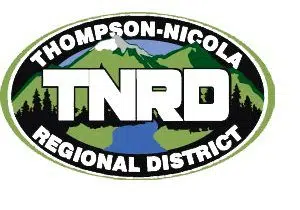
The City of Kamloops will now immediately start planning to build a second paved road in and out of Juniper Ridge.
This new guidance comes as a result of the lightning-caused wildfire on July 1 that threatened homes and lives in the neighbourhood. Miraculously, no one was hurt and no homes were lost, with staff noting today that the fire is out.
City manager David Trawin says the exact route of a second paved road is still to be determined.
“It will not be an emergency access route, it will be a full open route. That’s something we’ll have to work on with the engineering team and capital works team in the city.”
He reiterates the Transportation Master Plan shows the long-term plan being to extend Qu’Appelle Boulevard west, through Crown land, connecting to Rose Hill Road, north of Rose Hill Park.
“It may also be the extension of Galore (Crescent). We haven’t looked at that detail yet,” Trawin added.
“So we’ll be determining the best location for that, and trying to do that, and encouraging working with the federal and provincial governments on potential funding sources to help achieve a paid access road.”
Asked if that commitment will depend on funding from higher levels of government, or whether the city would commit to doing the work on its own.
“I can’t commit council,” Trawin says. “I think they’ve also heard, and received, a lot of letters on that.”
He adds council plans to meet with the Juniper Ridge Neighbourhood Association.
Mayor and council did not take part in the news conference, which included many of the city’s top management officials as well as leaders with Kamloops Fire Rescue and Kamloops RCMP.
Meanwhile, Trawin also says the city will also be bringing in the Voyent Alert App for Kamloops residents as soon as possible. The app is set up to alert residents about emergencies within the Thompson Nicola Regional District but is not in place for the City of Kamloops.
And Trawin says the city will also be reviewing how its Emergency Operations Centre responded to the situation.
“We’ll do a full debrief on what we can learn from this event, and the response. Not just the response out in the field but the response from the EOC side of things, as well as preparation side of things, and what we may do different,” he added. “You can practice as much as you want through tabletops, but you learn the most when you have a full response that’s actually a real live response.
“And (we’ll) make the results of that review public.”
Trawin says he’s been inundated with emails from Juniper residents, about the fear and anxiety they expressed on July 1.
“One comment I received which particularly hit home for me, was a lady who said, trying to get out while waiting in line with her son, was ‘at least we’ll die together, mother.’ I’ve received several emails similar in context to that.”
It took many residents well over an hour to get down Highland Road and out of the community after the lightning-caused fire broke out. Some people reported Highland Road was a single-lane going down the hill for hours after the fire started, before officials opened one of the southbound lanes to use for northbound traffic.
Other residents broke open a gate themselves to travel down the emergency access road out of Juniper West, which they say was poorly maintained and overgrown.
In the short term, prior to a full paved road being built, the city did not say whether it will be grading or making other improvements to that emergency route.
Acting civic operations manager Greg Wightman, filling in for an absent Jen Fretz, said crews were out today assessing emergency roads in Juniper and all over the city.
“We’ll have our operational debrief, we’ll get a lot of information, and a lot of actions, out of that. One of the things we’ve actioned today is what we can do to increase access to these emergency roads,” he said.
“They are not going to be open, they are not permanent roads, they are not for regular traffic to flow down. But in the an event like this, what can we do to make sure we’re even more prepared than we were.”

















